Turkish coffee isn’t for the faint of heart. The process couldn’t be anymore straight forward, and the result is a heavy, powerful cup of coffee.
If you’ve never made Turkish coffee before, you’re missing out on a fun process. Everyone has their own way of making Turkish coffee. I recommend doing it old school every once in a while to remind yourself of the cultural heritage of coffee and to get away from the exacting science of modern brewing techniques pushed by third wave coffee devotees.
Brewing Turkish coffee is much more of an art than it is a science. Plus, afterward, you get to dump the cup out and try and learn how to tell fortunes.
How to Make Turkish Coffee
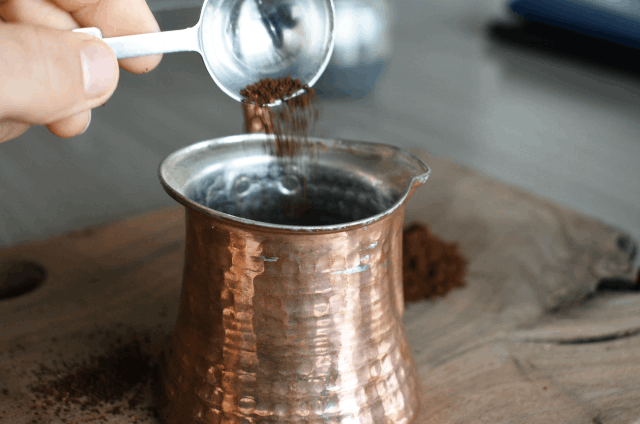
Learning to make Turkish coffee is simple. It’s most often made in a special pot called an ibrik. Most ibriks are six to twelve ounces, though I’ve seen some that look like they hold a full gallon.
Obviously, the size of the ibrik will change the amount of ground coffee you add to the pot, but this method will get you started making Turkish coffee, and you can adjust based on your taste.
Method:
- Add 2 tbsp finely ground coffee to ibrik
- Add 8 oz cold water to ibrik
- Add spices and sugar if desired
- Place ibrik on stove
- Let the coffee boil up
- As the foam nears the top, remove the ibrik from the heat and let the foam settle. Bring the ibrik back over the heat until it nearly foams over. Remove, and repeat this process until you’ve brought the foam up between 3 and 5 times.
- Remove the ibrik from the heat and give 30 seconds for the grounds to settle at the bottom of the pot.
- Slowly pour the coffee into small demitasse cups.
- Enjoy!
I always rise the foam up 4 times, but I’ve seen people rise the foam up 8 times. It’s an art.
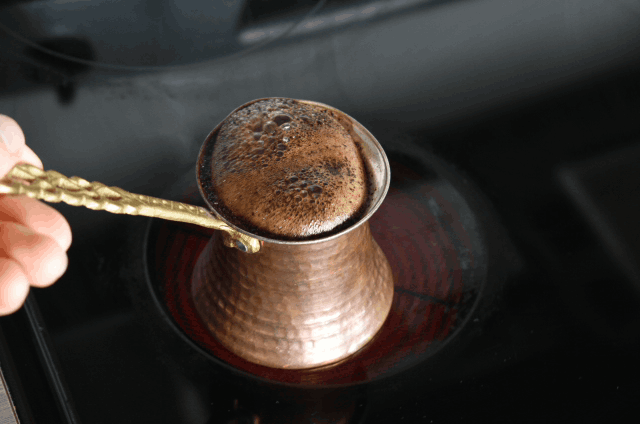
If you can pour out the crema on top, do it. If you can’t pour it out without adding too many grounds, get in there with a spoon and dollop the crema on top of the cups: this crema is a sign of great turkish coffee, and you’ll earn mad respect.
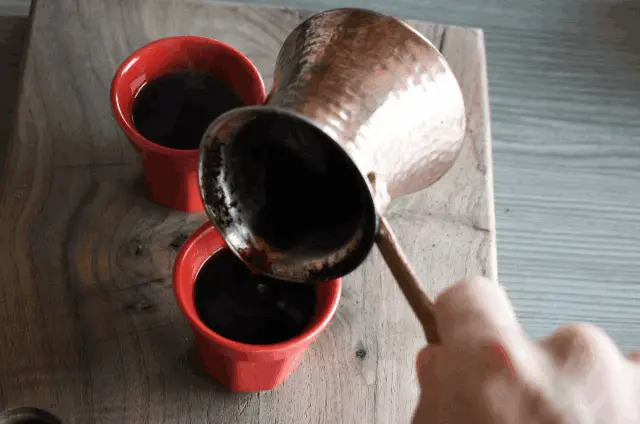
When finished, dump the grounds out on your plate.
Read your fortune!
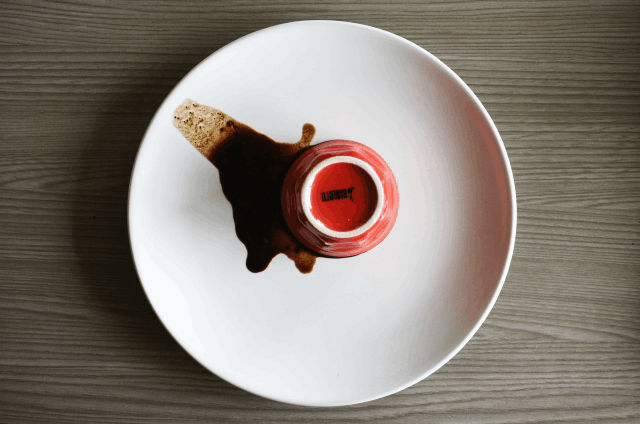
Which beans to choose?
Turkish coffee is heavy and musty. You’re not going to get clean flavor from it just based on how many grounds you’ll get in your cup.
Embrace the heavy nature of Turkish coffee and brew with an Indonesian coffee like Sumatra, Bali, or Sulawesi. The heavy, syrupy bodies of these coffees lend well to the Turkish coffee brewing method.
For more traditional flavor, I recommend a natural process Ethiopian coffee. Coffee originally spread through the middle east through the port of Mokha in Yemen. While Yemeni coffee is definitely the most traditional flavor, it’s really hard to find, and when you do find it green, it’s expensive. Getting coffee out of Yemen is difficult. Instead, use Yemen’s coffee-abundant neighbor, Ethiopia.
With a natural process coffee, you’ll get all the body and sweetness to make the best Turkish coffee ever, no sugar needed.
Grind Size
You want to grind turkish coffee as fine as possible. You don’t need a special turkish coffee grinder. In fact, this is one of the few applications where a blade coffee grinder works just as well, if not better, than a burr grinder. You can just pulverize the coffee until you’re tired of hearing the noise.
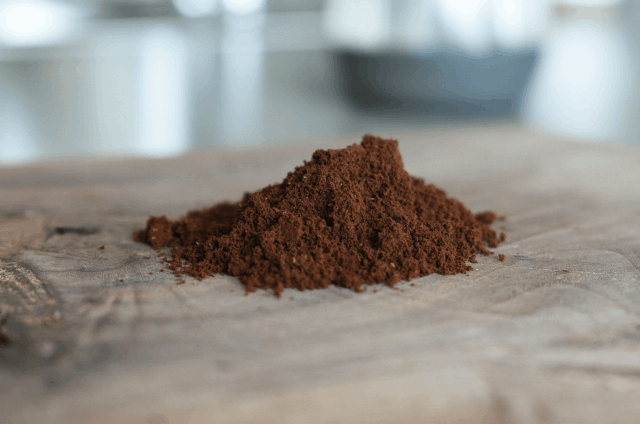
Dose and Measurement
2 tbsp per 8 oz.
1 tbsp = 5 grams coffee
How to Drink Turkish Coffee
Drink turkish coffee in demitasse cups. Don’t drink it from an insulated tumbler, 16 ounces at a time.
Turkish coffee is best enjoyed with other people. When you’ve finished your cup and you’re left with a fine coffee mud, turn your cup over on your plate.
Your coffee grounds tell your fortune. Have fun reading each other’s fortunes!
Other Turkish Coffee Recipes
Turkish coffee is all about the art of making coffee. Everyone likes it their own way.
Sugar is almost always an ingredient in Turkish coffee. I add just a very little amount, like a pinch of sugar. Sugar is most often added in proportion to the amount of coffee added:
Sweet: 1/2 part sugar for 1 part coffee
Very Sweet: 1 part sugar for 1 part coffee
Syrupy: 2 part sugar for 1 part coffee
Cardamom is also a common ingredient in Turkish coffee. Cardamom has a very strong sweetness to it, so if you’re going to add it to your ibrik, start with a pinch and then ramp up from there.
Turkish Coffee Spices
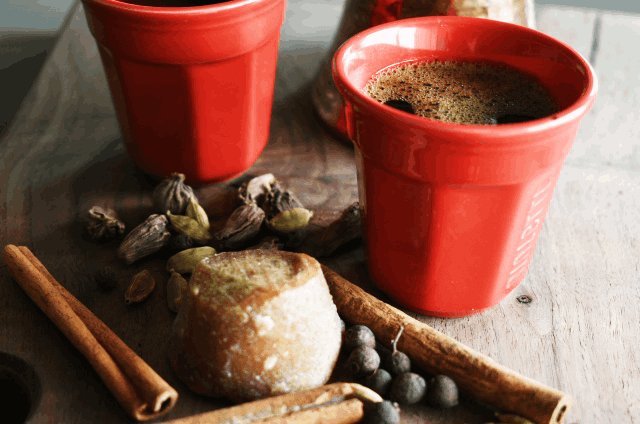
The most common Turkish coffee spice is cardamom. However, I’m sure that all sorts of spices have been brewed in an ibrik. In Yemen, there’s a drink called qishr, and though it doesn’t use coffee seeds (it uses the dried fruit instead), it’s brewed with ginger. Cloves are also good option for Turkish coffee.
Other spices to try:
- Cinnamon
- Sumac
- Dried Mint
- Cumin
- Turmeric
Bonus: How to Make Turkish coffee without an Ibrik
You can make turkish coffee without an ibrik, though the ibrik is really the heart and soul of the drink. Find the smallest pot you own and boil the coffee in there, following the same steps. You might not get the same crema as in the ibrik, but the flavor will be similar. This is also called cowboy coffee.
Use a funnel to pour your coffee into small cups.
Have you tried Turkish Coffee?
Let me know what you think of Turkish coffee in the comments section below! And if you’ve recently had some, go check your teeth for coffee grounds.




